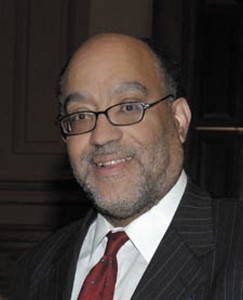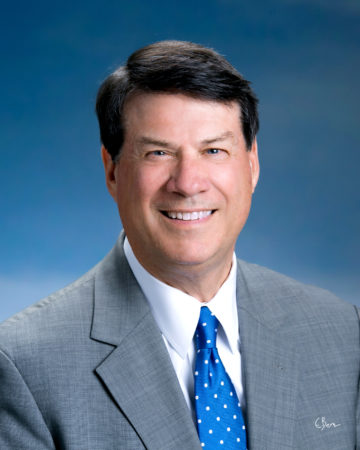In Buckhead and Brookhaven, in Dunwoody and Sandy Springs, mayors and other prominent elected officials have responded to the George Floyd protests by decrying systemic racism and calling for civic dialogues on race.
According to some Atlanta historians, they won’t have far to look for subject matter. Racism, the historians say, was a driving force in making the communities majority-White and affluent, in the annexation and cityhood movements that raised them to prominence, and in the lingering segregation that they help to embody in the metro area’s housing patterns, schools and economic development.
“I don’t think anything’s changed for the suburban areas. They resisted integration back then… The whole area’s still segregated,” said Ronald Bayor, a retired professor of history and sociology at Georgia Tech and author of “Race and the Shaping of Twentieth-Century Atlanta.”
Race is one of many factors in Atlanta’s political and social history, he and other experts note, but early overt racism remains an enduring, underlying, systemic force that shapes where people live and work, whether intentionally or not. Bayor and others say old racist patterns continue to play out in redevelopments of places like Buford Highway and Sandy Springs’ North End, where mostly or all-White groups seek higher-end remakes of minority areas for their own aspirations, or in separatist urges like rumblings about Buckhead leaving Atlanta.
Two of the leaders involved in the political debates that led to the landmark 2005 incorporation of Sandy Springs — the inspiration for other local city formations — agree that race was a factor, though not on whether it came predominantly from White Republican proponents or Black Democrat opponents.
“It was much more complex and complicated than just race, but race was a factor,” said Rusty Paul, who fought for cityhood as a state senator and is now the city’s mayor. “…By the time cityhood really got critical mass, racism was much more subtle but still just as effective. I would not be fair [or] accurate if I didn’t acknowledge that there were issues on both sides that had racial overtones. It wasn’t everyone.”
Paul added that “for reasons that I truly never understood,” race became an opposition issue, along with class and partisanship, as the cityhood was led by “very affluent, White [and] Republican” community advocates.
“I think it’s going to be difficult for them to have a quote-unquote dialogue on race until they come to admit that the city was birthed in racism,” said former state Sen. Vincent Fort, who opposed Sandy Springs cityhood. He said he sympathized with arguments for more local control, but that achieving it through separatism was unnecessary and a form of coded racism based in “resentment that you had a majority-African American board [on the Fulton County Commission] making decisions.”
Paul’s recent moves to establish a series of virtual dinners to discuss race and racism is a major development in local politics. Yet racial dialogue is also not new to metro Atlanta and itself can be part of the pattern of racial hierarchy. The classic form is the “Atlanta Way,” a term recently used by J.P. Matzigkeit and Howard Shook, members of the Atlanta City Council representing Buckhead, in praising or calling for peaceful protests.
As described by former Georgia Tech urban planning professor Larry Keating in his book “Atlanta: Race, Class and Urban Development,” the Atlanta Way was a political tactic established by Mayor William Hartsfield for dealing with the burgeoning Civil Rights movement of the 1950s. It involved White business and political leaders teaming with Black community leaders to negotiate gradual desegregation in exchange for avoiding direct confrontations or more radical demands.
The Atlanta Way is credited for making the city relatively progressive in its time and for avoiding more severe versions of racist backlash violence that gripped other Southern cities. “But beneath this surface civility harsh facts prevail,” wrote Keating. The effect, he said, was to ensure White business elites controlled the city, with some concessions for the Black middle class, and little interest in the needs of the White middle class and the poor of either race. Continued segregation and widening income inequality are among its results, he writes. It’s a political dynamic that has continued even after decades of Black mayors leading Atlanta, according to Keating and Bayor.
“It’s always been a facade. First of all, Atlanta was never ‘the city too busy to hate,’” said Bayor, using another Hartsfield-era term. “…There’s always been problems over race and I think that continues. Obviously in the [Atlanta] police department it continues.”
“Taking down statues — and I have no objections to taking down Confederate statues — but that’s facade also. That’s how they’re covering,” Bayor said. “Things have to go on that will change the systemic racism that goes on in our society. And that’s so inbred into the system it’s going to take a while.”
Race and northern expansion
“White fear of a black-run city” dominated Atlanta politics for a hundred years after the end of the Civil War, when Black citizens got the right to vote, Bayor wrote in his book. Along with “Jim Crow” laws enforcing racial segregation, those politics shaped the development of the northside suburbs.
Segregation of Black residents in less desirable areas helped to send more White residents into then largely rural northern communities. Brookhaven’s Lynwood Park neighborhood was created in 1930 by Black residents forced out of Buckhead, where many continued to work as personal servants, according to the book “Race and Ethnicity: Across Time, Space, and Discipline.”
At least 15 African American communities were wiped out for White redevelopment by governments in the area in 1940-1960, according to Keating. They include Macedonia Park, razed in the 1940s and ’50s so the White Garden Hills community could have amenities at what is now Frankie Allen Park.
Expansion of the northern suburbs came in the Civil Rights era and “was overtly racial at first,” writes Keating. “Affluent Whites moved to the northern suburbs to live at a distance from the city’s Blacks, whom segregation had concentrated in the near south side.” After Jim Crow, a degree of that segregation in real estate is maintained, Keating and Bayor say, through such mechanisms as restrictive zoning that inflates home prices and agents steering Black clients away from White communities. Jobs shifted north as well, with Buckhead becoming Atlanta’s financial core and Perimeter Center a Fortune 500 hub.
When integration exists, it is often just a temporary side effect of gentrification, according to Keating. That process is a recent dynamic in Atlanta, as White populations both return to the inner city and move to even farther suburbs, while Perimeter cities grow increasingly diverse.
In the 1940s, Hartsfield attempted to annex Buckhead and some other White suburbs into Atlanta. Revenue was the public rationale, but privately he acknowledged it was also about maintaining a White majority. “Our Negro population is growing by leaps and bounds… [Black citizens] will become a potent political force in Atlanta if our white citizens are just going to move out and give it to them,” he wrote privately to community leaders in Buckhead and Druid Hills, according to Bayor’s book.
Buckhead’s annexation was accomplished in 1952, and in the 1960s, Hartsfield set his sights on Sandy Springs for the same reasons. Local residents rejected annexation out of fears of higher taxes and that the White-majority tactic would fail. In one response, Sandy Springs activists wrote that they would “build up a city separate from Atlanta and your Negroes and forbid any Negroes to buy, or own, or live within our limits,” according to Princeton University history professor Kevin Kruse’s book “White Flight: Atlanta and the Making of Modern Conservatism.”
When future founding mayor Eva Galambos got involved in the cityhood movement a decade later, such overt racism was gone. Like city founders who followed her in Brookhaven, Dunwoody and other metro areas, she and her allies talked about tax money going elsewhere rather than improving local streets and policing, and about corrupt or incompetent county governments that foisted unwanted developments on the community. In her 2011 autobiography “A Dream Come True,” Galambos presents Black leaders’ opposition as inexplicably mean or irrational and hinted it was itself a form of racism, culminating in the moment cityhood supporters convinced Civil Rights icon U.S. Rep. John Lewis to endorse their right to vote on the plan.
Fort says there was no mystery to the opposition: It was about maintaining revenue for less affluent Black communities in need. “I could sympathize with the zoning issue because I come out of that type of neighborhood protection background,” said Fort. But he believes the arguments about keeping money local and incompetent leaders were in part thinly veiled racist tropes, and that cityhood was a prelude to the “apartheid” proposal to break off north Fulton as a separate, majority-White county called Milton — which was politically viable as recently as 2011.
“It is just so ironic they would charge that they were quote-unquote the victims and that their fight for the incorporation of Sandy Springs and other incorporations was a Civil Rights issue. … It’s really kind of mind-boggling,” said Fort.
“Sandy Springs is a lot more diverse than the concept of it,” said Paul, suggesting there was some stereotyping of the cityhood movement. He focused on the outcome, claiming the city today provides as much or more tax revenue to Fulton and that the recent incorporation of South Fulton shows the cityhood model is effective. “What we proved, I think, was that you can have your cake and eat it, too,” he said.
Paul said that back then, he never sat down with cityhood opponents to ask about the racial issues; now he is among the leaders making that call for racial dialogue that is new to the young cities. Fort said he wonders whether it will result in significant changes like redrawing City Council districts to allow for the election of minority candidates. Bayor says that, while there is plenty to discuss, there are few models for successful integration anywhere in the U.S.
“They’re all talking the talk, but let’s see if they’re walking the walk,” he said. “… It’s certainly better to have that discussion. But it’s not like we haven’t had it before.”




